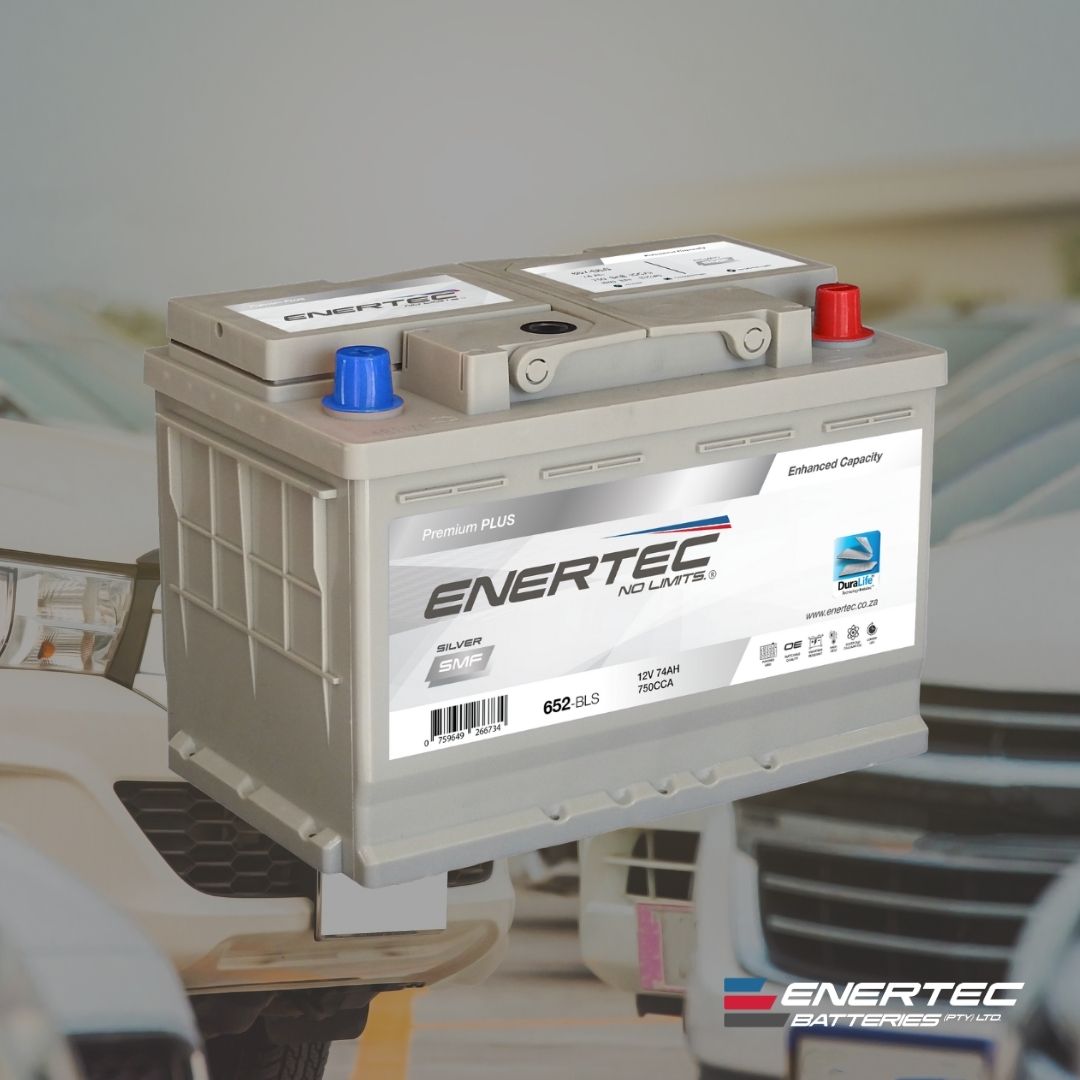2023-01-11 07:41:13
Differentiation between an EFB and AGM automotive and commercial battery
While Enhanced Flooded Batteries (EFB) and Absorbed Glass Mat (AGM) batteries are both types of lead-acid battery, their technologies are quite different. When buying a lead-acid battery, you will want to know which technology works best for the vehicle in question, so a thorough understanding of EFB and AGM batteries is helpful when making your choice.
AGM and EFB batteries are an improvement on traditional flooded lead-acid batteries, with some key differences. Lead-acid batteries are characterised by their lead plates and sulphuric acid electrolyte. They are generally ranked in terms of factors such as output, durability and number of engine starts, with standard lead-acid batteries being the most basic, EFB batteries being mid-tier, and AGM batteries being in the upper tier.
In this article, we will discuss the differences between EFB and AGM batteries, as well as the distinct advantage of AGM batteries.
What is an EFB battery?
EFB batteries are an enhanced version of the standard flooded lead-acid battery. They have a special material called the scrim near the surface of the positive plate which drastically improves the battery life.
The scrim is a polyester element that sits between the plate and the separator, which protects the plate from erosion by holding the reactive material in place. This allows the battery greater deep cyclic resistance and charge acceptance.
These batteries have another characteristic separating them from traditional lead-acid batteries - the acid circulator.
The acid circulator prevents the sulphuric acid and water in the electrolyte solution from separating (or stratifying). The circulator works in a very interesting way. In physics, inertia is a property of matter where objects remain in a state of motion or rest unless an external force causes this to change. The acid circulator uses the inertia of a moving vehicle - think of how water in a bottle inside a cupholder sloshes around when a car comes to a sudden stop - to maintain a constant circulation of the battery acid inside the battery, which keeps the acid and water combined as they should be.
Because the density level of the battery fluid is kept the same, the charge acceptance and battery life of the battery are improved by this technology.
What are the primary benefits of EFB battery technology?
Improved performance, cycle life and durability
The starting amps of an EFB far exceed that of a traditional flooded battery of the same capacity, making their performance far superior.
Because of the thicker pure lead and microfibre plates, EFB batteries have improved battery capacity and charging speed. They also have longer cycles, making them last longer between charges. In addition to these improvements, they also have double the service life of a traditional lead-acid battery.
Increased number of engine starts
On average, EFB batteries can provide up to 85 000 engine starts, while standard flooded lead-acid batteries have a maximum of about 30 000 engine starts, giving EFB batteries a whopping 50 000 more engine starts than the standard car battery.
Better charge acceptance
These batteries have a greater ability to accept and store energy than traditional lead-acid batteries.
Double the deep cycling performance and partial state of charge
EFB batteries have a greater ability to withstand deeper discharge and operate effectively under lower states of charge than traditional lead-acid batteries, which tend to experience stratification and sulphation much more easily when they are discharged.
What are the key features of an AGM battery?
An Absorbed Glass Mat (AGM) battery consists of lead plates and a sulphuric acid-based electrolyte, much in the same way as traditional lead-acid batteries. The main difference is that, rather than free floating, the electrolyte is absorbed into glass mats like a sponge.
This seemingly simple innovation is a significant improvement on flooded lead-acid batteries.
Advantages and disadvantages of AGM batteries
AGM batteries have a number of advantages over flooded lead-acid batteries, especially for vehicles that have much higher demands.
Produce higher amp power output
AGM batteries have a lower internal resistance, which allows them to provide improved power pulses when starting a vehicle.
Improved charge efficiency and cycle life
These batteries can charge almost 5 times faster, and their charge lasts up to 2x longer than flooded batteries. AGM batteries have a very low self-discharge rate, and so do not lose charge as quickly when not in use. They can be discharged further than traditional lead-acid batteries without any long term damage.
Longer lifespan and improved durability
Because they are less likely to sulphate and stratify than flooded batteries, AGM batteries tend to experience less damage with normal use. Because of their superior design, they last longer and can withstand rougher conditions than traditional flooded batteries.
Temperature resistant
The superior design of AGM batteries also allows them to handle changing weather conditions better, especially cold temperatures. This is especially because the electrolyte is absorbed into glass mats and is not flooded within the battery.
Upgraded vibration and shock resistance
Because the electrolyte is absorbed into glass mats and is not a free liquid, the battery is less subject to shocks and vibrations from driving. This is because the glass mat between the lead plates acts as a damper. The tight packing of the plates and mats reduces movement and vibrations to almost zero. For commercial vehicles, this is an incredibly important benefit.
Improved safety
AGM batteries do not produce harmful fumes or gases, as this is normally more common with a free liquid electrolyte.
Since there is no free floating electrolyte, the problems that traditional batteries have with leakage are virtually eliminated, meaning that they can also be disposed of much more safely.
Better for vehicles with higher energy drains and demands
These batteries are also better able to withstand higher electrical loads. This is very beneficial for vehicles fitted with many electronic devices, including navigation systems.
Disadvantages:
High production cost
Unlike traditional flooded and EFB batteries, AGM batteries have a higher production cost. This is due to their specialised design and more expensive materials. Even though increased manufacturing scale has brought the cost down over the last few decades, they are still more expensive than their simpler counterparts.
Energy issues
While these batteries do have a higher output than traditional and EFB batteries, they have a lower specific energy (the energy contained in each unit of mass). This means that they cannot be used for specific devices which have a high specific load, as they are less able to run for a long time under a moderate load.
Reduced capacity over time
Like all lead-acid batteries, except for gel batteries, AGM batteries gradually lose their charging capacity over time.
Sensitive to overcharging
When compared to traditional flooded and EFB batteries, AGM batteries are less able to handle high voltages and overcharging. If they are not charged correctly, they are more likely to experience damage, which will shorten their lifespan. Chargers used on AGM batteries must have a specific AGM setting to prevent this from happening.
An AGM battery is an acceptable replacement and considered an upgrade
AGM batteries are considered a drop-in replacement for a traditional lead-acid battery for most newer vehicles, as the charging voltages are almost identical. Because they have a lower internal resistance, they can be charged at a much faster rate. This shouldn’t be a cause for concern, as the wiring in the majority of vehicles is designed to handle the maximum rated output of the alternator.
However, while installation is mostly the same for the two battery technology types, some vehicles (those with a Battery Sensor Module or another similar system) will require a battery recalibration with a scan tool when the battery is replaced. If this is not done, the alternator may overcharge the new battery, causing it to fail soon after replacement.
In conclusion on the difference between AGM and EFB batteries
While both EFB and AGM batteries are improvements on traditional flooded lead-acid batteries, they are quite different in their respective technologies.
Although EFB batteries are a vast improvement on conventional flooded batteries, they still present many of the issues associated with flooded batteries. However, they are a great option for those looking for an improved lead-acid battery on a budget.
Because the AGM battery does not have a free floating liquid electrolyte, it has a number of benefits over flooded batteries, making it the ideal choice for those looking for a top quality lead-acid battery.
Knowing which lead-acid battery is best suited for different types of commercial vehicles, taking budget and other relevant factors into consideration, is incredibly helpful when it comes to making the best decision.
Enertec Batteries, with over forty years of experience in the battery industry, and a well-trained set of staff with years of experience supplying the automotive industry, is uniquely equipped to assist with this decision.
For more information, reach out to us here. Alternatively, browse our website to find out more about our products. Let us help you find your ideal energy solution.



